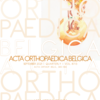Ganz osteotomy for treatment of hip dysplasia through intra-pelvic approach. Early results
dysplasia; hip; Ganz; Stoppa; osteotomy; periacetabular
Published online: Feb 16 2022
Abstract
Ganz periacetabular osteotomy (PAO) is a technically demanding surgical procedure. It requires cutting around the acetabulum to mobilize it under fluoro- scopic control. The radiolucent table and good quality imaging are mandatory to perform this osteotomy in a safe way. Modification of Ganz osteotomy was developed a with minimal soft tissue exposure using intra-pelvic approach which allows direct visualization of the quadrilateral plate. The purpose of the present study was to review the early results in the initial group of patients who had this procedure. The Ganz PAO was performed on 8 cases painful dysplastic hips, using the intra-pelvic approach through the Pfannenstiel incision. All of the osteotomies were performed under fluoroscopic control and direct visualizing the osteotomy site from the same incision. The acetabular fragment was medialized and redirected anterolaterally then fixed with 3 screws. The pre-operative Harris hip score mean was 66.8 and improved to be 92.7 (p value <0.0005) and this was statistically significant. Radiologically the CEA improved in the pre-operative X-ray from mean of 13.12 degree to 28.37 degrees (p value <0.0005) and this was statistically significant. Painful dysplastic hips should be treated before function becomes seriously impaired. The Ganz osteotomy through an intra-pelvic approach, can be done with minimal exposure to radiation in a relatively short time.
